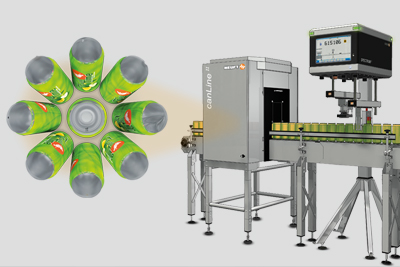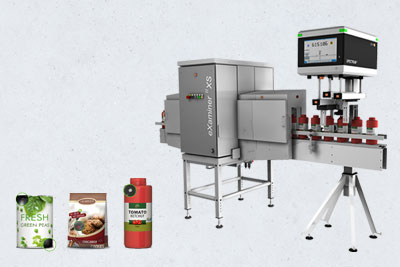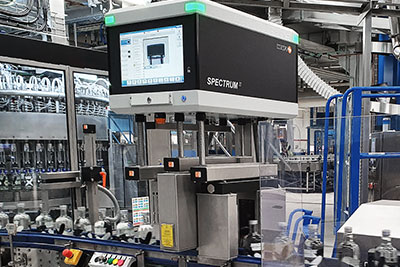Safe beverage cans filled without faults
From empty container to tray completely filled with full products: the latest new and further developments from HEUFT ensure full packaging safety, product quality and productivity when filling beverages into cans.
Almost four billion of them were sold in Germany in 2019 alone. This is an increase of more than 10 per cent compared to the previous year. And the beverage can segment continues to expand worldwide: analysts expect an annual growth rate of up to five per cent in the near future so that the global market for the practical primary packaging will already achieve an estimated 17.24 billion US dollars as early as 2025. This does not even include the effects of the COVID-19 pandemic which are expected to lead to a substantial increase in can sales.
Energy drinks continue to be among the growth drivers apart from craft beers. But also secco, cider, kombucha and hard seltzer are increasingly being packaged in beverage cans. This is because the metal packaging with thin walls is compact, lightweight, unbreakable, impervious to light, easy to pasteurise, can be cooled quickly and recycled any number of times. An output of over 100,000 cans per hour can be achieved during the filling process. Therefore it is important to have an in-line inspection system which keeps up with this and ensures both the quality of the packaging and the product as well as the productivity of the complete line. High-performance HEUFT systems with the latest further developments ensure this:
Optimised empty can inspection
The HEUFT canLine II checks the integrity and sealability of the can even before the beverage is in it by identifying foreign objects on the base and dented or highly contaminated sidewalls just as reliably as distorted or notched flanged edges using only one single top-down colour sensor camera. Contaminated and unsuitable empty cans which cannot be reliably filled or sealed are rejected before they can jeopardise the quality of the end product and the efficiency of the filling line.
The detection accuracy of the space-saving empty can inspector of the new generation is once again significantly increased because the adaptive LED lighting and smart image processing have now been integrated directly into the new in-house developed sensor camera. And damage, residue and contamination such as material flaws, lacquer faults as well as residual oil or grease are now also reliably detected there with the current extension for a full coverage inspection of the sloping inner shoulder area just below the can opening which is difficult to examine.
Diverse options for checking full containers
There are different technologies, modules and systems available from HEUFT for the in-line quality check of beverage cans after the filling process. For example the innovative X-ray measuring bridge for a precise fill level detection, which detects underfills as well overfills in one and the same work process, can be integrated not only in the compact HEUFT ONE entry-level device but also in the HEUFT PRIME full container check with a machine connection, which can be extensively equipped, and in the HEUFT SPECTRUM II VX which combines a maximum of detection functions with permanent filler valve and closer head monitoring.
All three can check the fill level and internal pressure of filled cans and, among other things, examine the integrity of their closures and read product markings such as barcodes or data matrix codes with one, two or even five connectable HEUFT sensor cameras. Additional HEUFT FinalView II modules can be attached to the HEUFT SPECTRUM II VX such as an all-around inspection of the outer walls of the can. There are differences in the combination possibilities of the individual detection technologies, the degree of automation and the line speed: the HEUFT ONE is designed for checking the quality of up to 72,000 filled beverage cans per hour, the HEUFT PRIME manages up to 99,000 over the same period and the HEUFT SPECTRUM II VX even up to 140,000.
The latter adapts the position of its detection units automatically to changing can formats for fast, uncomplicated brand changeovers while the HEUFT NaVi provides the user with audiovisual support. The user guidance is also standard in the HEUFT PRIME and the automatic vertical adjustment can be integrated as an option. This simply functions manually with the cost-effective HEUFT ONE entry-level device which can be integrated into the canning line in a particularly space-saving manner.
Pulsed radiometric lateral inspection for a foreign object detection
On the other hand the detections are adjusted fully automatically and assisted during brand and format changes with the compact HEUFT eXaminer II XS: this applies above all to its X-ray strobes which can be flexibly positioned besides modules for checking fill levels, closures, internal pressure and marking which can be connected to its separate control unit optionally. They are safely enclosed and carry out a lateral inspection directly on the conveyor for a careful and precise detection of solid foreign objects.
One X-ray strobe which scans this area without gaps is usually quite sufficient because such mostly metal objects do not float in the liquid product but always sink to the bottom of the beverage can. The inspection is even more precise with two of them: the foreign objects are immediately visible twice from different perspectives where the two X-ray pulses overlap.
Reliable full tray inspection
From an empty can inspection to the detection of foreign objects in metal packaging which has already been filled: all the containers which have not passed one of the quality tests are tracked with millimetre precision and removed in good time using special rejection systems such as the HEUFT pusher. Therefore only those which are really error-free and safe continue to the filler and finally to the packer. Last but not least a HEUFT device for a full case inspection checks whether the trays have been completely and correctly filled there with perfect beverage cans. This ensures full packaging and product quality with maximum efficiency and productivity in the growth segment of beverage cans from the beginning to the end of the filling line.




